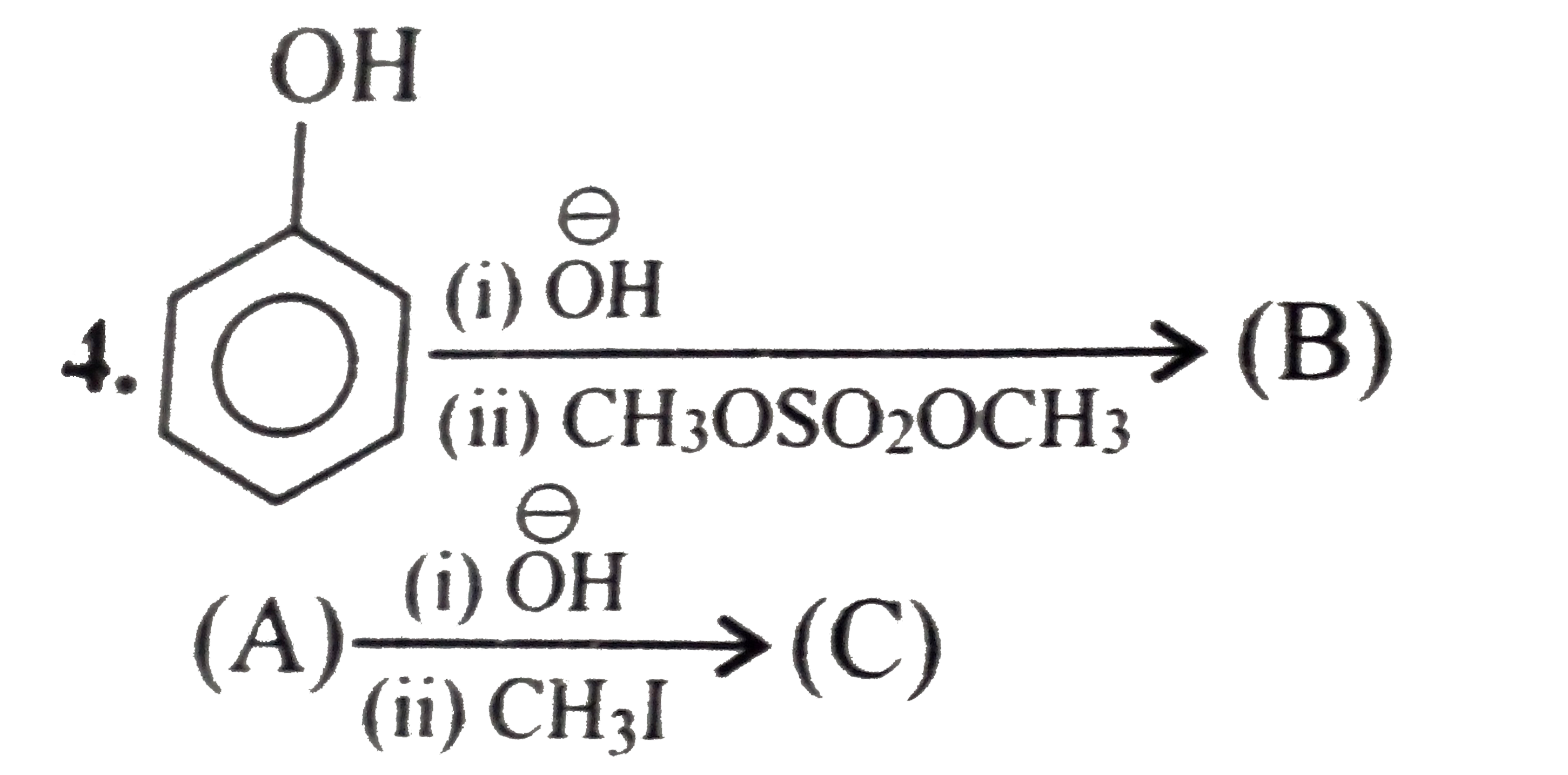
The products (A), (B), and (c ) are:
A
a.
B
b.
C
c.
D
d.
Video Solution
Text Solution
The correct Answer is:B
(i) (H2+Ni) converts (-CHO) group to (−CH2OH) group. (ii) (H2+Ni) at high pressure also reduces double bond of benzene ring along with reduction of (−CHO) group to (−CH2OH) group. (iii) Birch reduction (Na+liq.NH3+C2H5OH) reduces one doule bond of benzene ring to give product with isolated double bond in which EWG (in problem (−CHO) group) ends up allylic to both double bonds. So the answer is (b).
|
Topper's Solved these Questions
- REDUCTION AND OXIDATION REACTION OF ORGANIC COMPOUNDSBOOK - CENGAGE CHEMISTRYCHAPTER - REDUCTION AND OXIDATION REACTION OF ORGANIC COMPOUNDSEXERCISE - Exercise (Assertion And Reasoning)
10 Videos
- REDUCTION AND OXIDATION REACTION OF ORGANIC COMPOUNDSBOOK - CENGAGE CHEMISTRYCHAPTER - REDUCTION AND OXIDATION REACTION OF ORGANIC COMPOUNDSEXERCISE - Exercise Archives (Subjective)
26 Videos
- REDUCTION AND OXIDATION REACTION OF ORGANIC COMPOUNDSBOOK - CENGAGE CHEMISTRYCHAPTER - REDUCTION AND OXIDATION REACTION OF ORGANIC COMPOUNDSEXERCISE - Exercise (Multiple Correct)
35 Videos
- QUALITATIVE INORGANIC SALT ANALYSISBOOK - CENGAGE CHEMISTRYCHAPTER - QUALITATIVE INORGANIC SALT ANALYSISEXERCISE - Viva Voce Questions And Part-C (Analysis Of Cations)
42 Videos
- SOLID STATEBOOK - CENGAGE CHEMISTRYCHAPTER - SOLID STATEEXERCISE - Ex 1.2 (Objective)
9 Videos
Similar Questions
Knowledge Check

The product (A),(B), and (C) are:Aa.(A)⇒ Azobenzene, (B)⇒ Hydrazobenzene, (C)⇒ AzoxybenzeneBb.(A)⇒ Azobenzene, (B)⇒ Azoxybenzene, (C)⇒ HydrazobenzeneCc.(A)⇒ Azoxybenzene, (B)⇒ Azobenzene, (C)⇒ HydrazobezeneDd.(A) ⇒ Azoxybenzene, (B) ⇒ Hydrazobenzene, (C )⇒ AzobenzeneWthanol is dehydrated as,

Major products (A),(B) and (C ) are respectively :A(A)(B)(C)(A)C2H5HSO4C2H5OC2H5C2H4B(A)(B)(C)(A)C2H4C2H5OC2H5C2H5HSO4C(A)(B)(C)(A)C2H5HSO4C2H4C2H5OC2H5D(A)(B)(C)(A)C2H5C2H5HSO4C2H5OC2H5Consider the following sequence of reactions:

The products (B) and (C) are:A B
B C
C D
D
Write structures of the products A, B,C,D and E in the following scheme.

View SolutionExplain the formation of products (B), (C), and (D) in the following reaction.

View Solution
The product (B), and (C) are:
View Solution
The products (B) and (C ), respectively, are:
View SolutionAn inorganic salt (A) is decomposed on heating to give two products (B) and (C). Compound (C) is a liquid at room temperature and is neutral to litmus while compound (B) is a colourless neutral gas. Compounds (A), (B) and (C) are
View Solution

